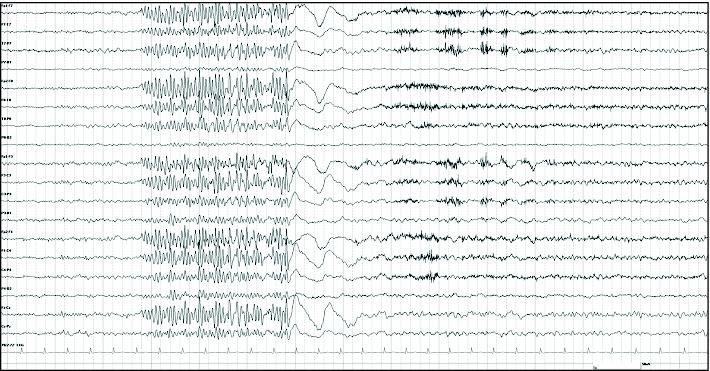
Brief potentially ictal rhythmic discharges were identified before seizures in all but 1 case (93%) and ceased in all 12 cases (80%) in which seizures were controlled. Patients with B(I)RDs were more likely to have seizures during continuous electroencephalography than were patients without B(I)RDs (15 of 20 vs 10 of 40 P < .001), and 9 patients with B(I)RDs (60%) had only subclinical seizures. All patients with B(I)RDs had cerebral injury, and in cases with a single focal lesion (11 ), B(I)RDs were localized in the same region in all but 2 cases (18%). The pattern most often consisted of very brief (1-3 seconds) runs of sharply contoured theta activity without obvious evolution. Results We identified B(I)RDs in 20 patients (2%). Main Outcomes and Measures The prevalence of seizures during continuous electroencephalography and functional outcome, as measured by the Glasgow Outcome Scale, were determined. Objective To describe the incidence of B(I)RDs in critically ill patients and investigate their association with seizures and outcome.ĭesign, Setting, and Participants We reviewed the records of prospectively identified patients with B(I)RDs and patients serving as controls matched for age (±5 years) and primary diagnosis. Importance Brief potentially ictal rhythmic discharges, termed B(I)RDs, have been described mainly in neonates, and their significance in adults remains unclear.

Shared Decision Making and Communication.Scientific Discovery and the Future of Medicine.Health Care Economics, Insurance, Payment.Clinical Implications of Basic Neuroscience.Challenges in Clinical Electrocardiography.High- and low-pass filters were set at 1 and 70 Hz, respectively. C, Similar runs of theta activity were observed in the absence of LPDs (boxed area). B, A 10-second EEG page showing the occurrence of a very brief run of sharply contoured theta activity (B(I)RDs) over the left midtemporal region (boxed area) and independent LPDs with fast activity (underlined) over the left posterior quadrant intermittent. B and C, A man in his late 40s with glioblastoma multiforme and focal motor seizures.

There was simultaneous occurrence of low-amplitude lateralized periodic discharges (LPDs) (underlined) over the right temporal region. A 10-second electroencephalogram (EEG) page showing a very brief run of sharply contoured, intermittent rhythmic theta activity (brief potentially ictal rhythmic discharges ) was noted over the right anterior temporal region (boxed areas). A, A man in his mid-70s with papillary thyroid cancer and brain metastases presented with a new-onset seizure.


 0 kommentar(er)
0 kommentar(er)
